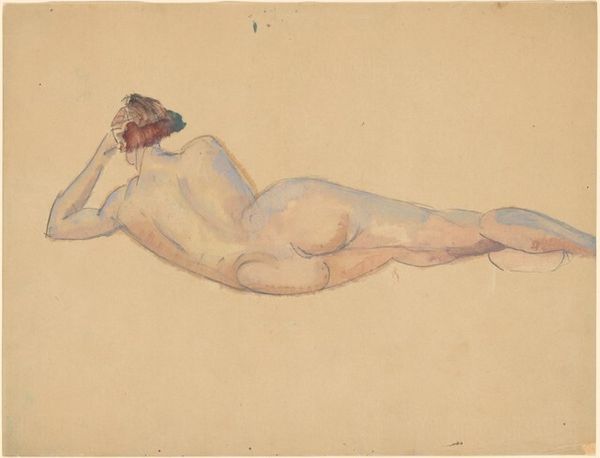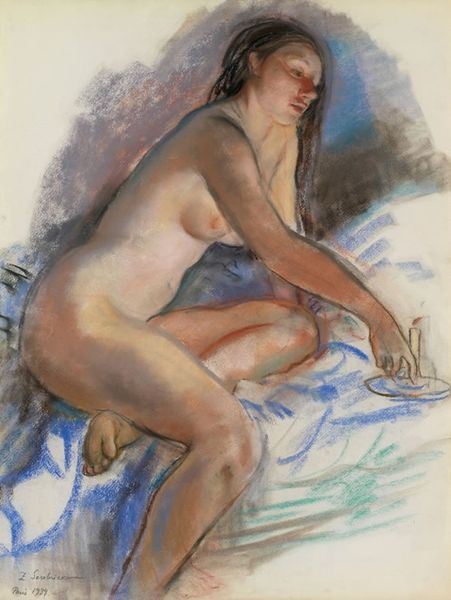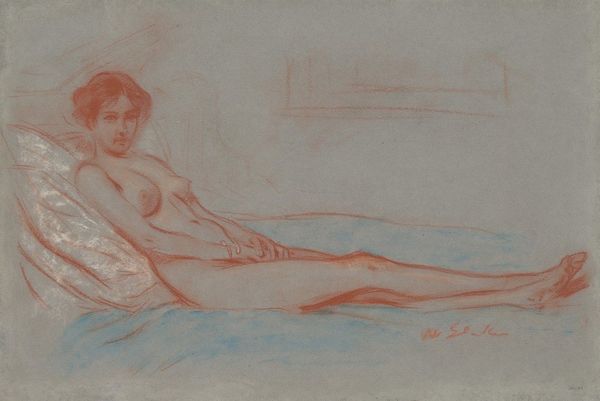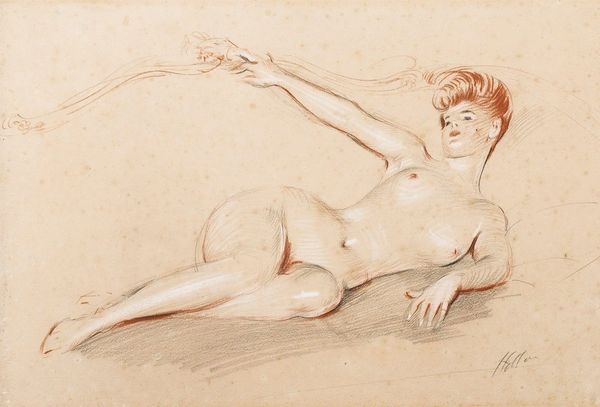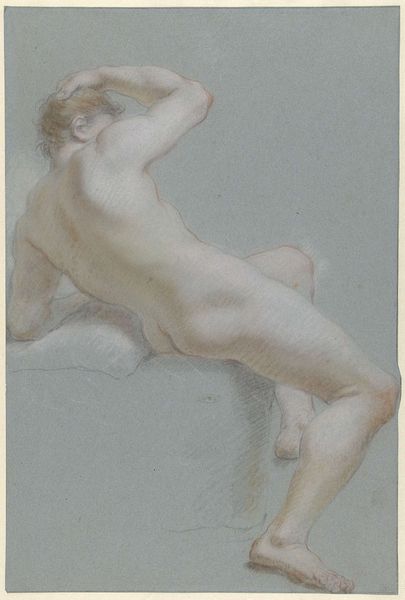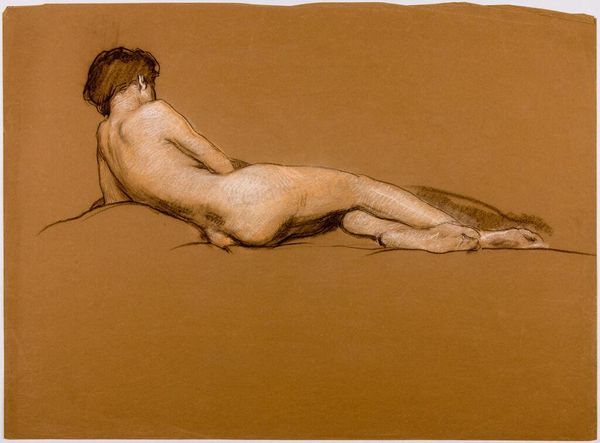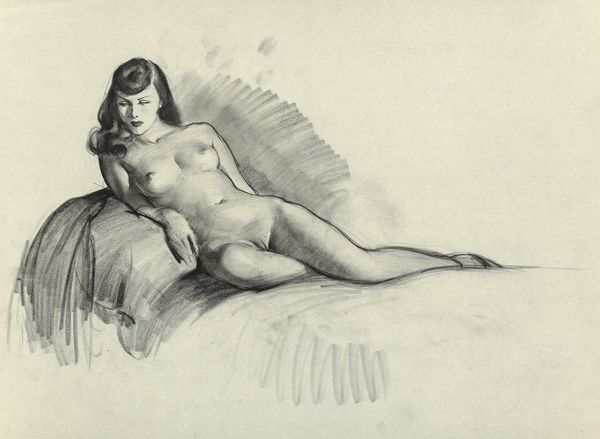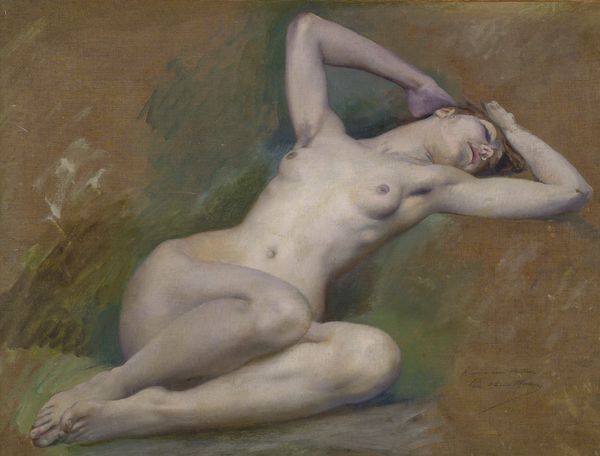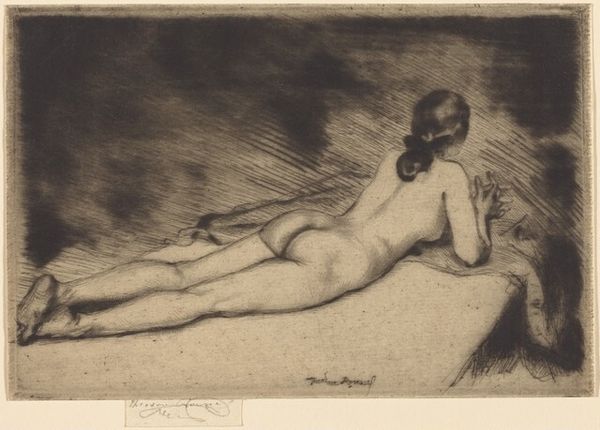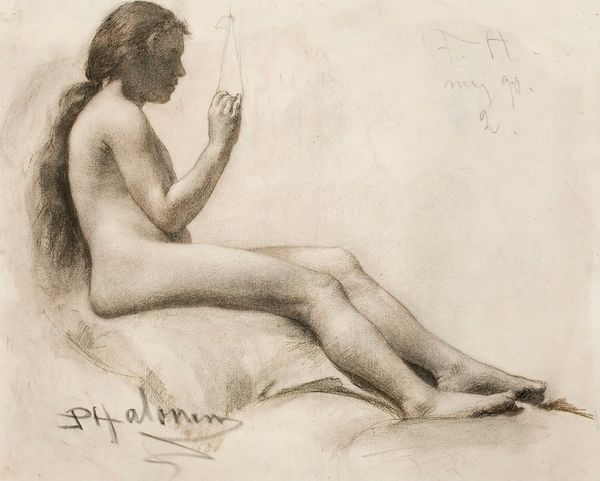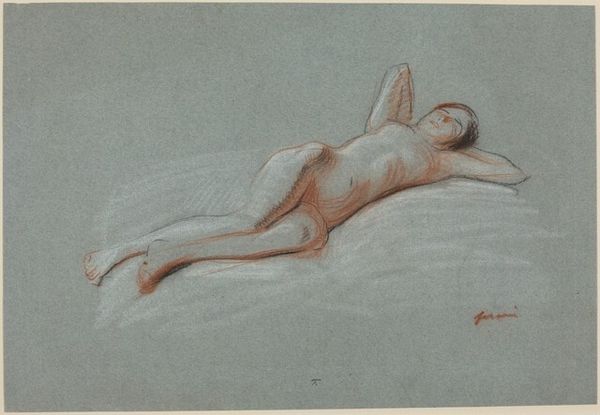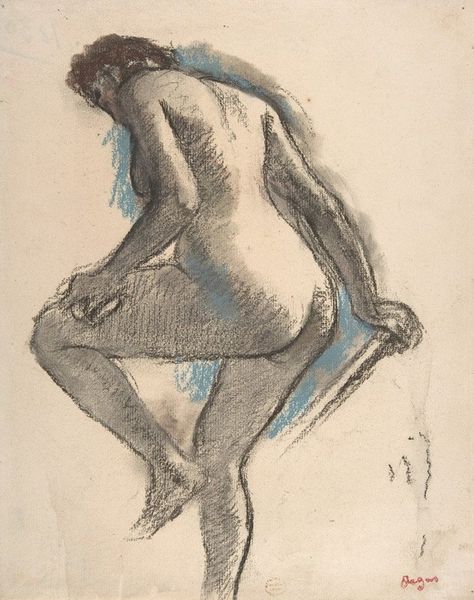
Copyright: Zinaida Serebriakova,Fair Use
Editor: Here we have Zinaida Serebriakova's "Nude Back" from 1932, a charcoal and pastel drawing. I'm struck by the softness of the lines, and the subtle shading. What can you tell us about it? Curator: Well, focusing on the materials, we see charcoal and pastel. Think about that choice. Pastel allows for that soft, almost fleeting impression of light on skin. Charcoal gives it definition, bones, literally and figuratively. Given that this was made in Paris in the 1930s, how do you think it's reacting to or participating in artistic labor and traditions around it? Editor: That's interesting. I hadn't considered that. Was it perhaps trying to distance itself from more academic, highly polished styles by embracing the immediacy and "honesty" of drawing? Curator: Precisely! The availability of materials like charcoal and pastel also democratized art-making. Someone didn't need an elaborate studio, just paper and pigments. The very accessibility challenges high art's pretense. And the 'nude' itself --is this really about an idealized beauty, or is Serebriakova perhaps exploring a body that is also a site of labor and production? Editor: So, we are seeing the artist responding to changes of production in arts? The raw materials themselves open up to question the traditional norms? Curator: Exactly. She is challenging the viewers conception by representing a shift from purely aesthetic and ideological concepts, to how art making itself changed. What do you think the rise of photography might have meant to her approach as well? Editor: This gives me much to reflect on; how art responds to materiality! Thank you for clarifying this artwork, seeing that even media, shape our interpretations of the work and give light to what cultural context impacted the artist to materialize this artwork.
Comments
No comments
Be the first to comment and join the conversation on the ultimate creative platform.
